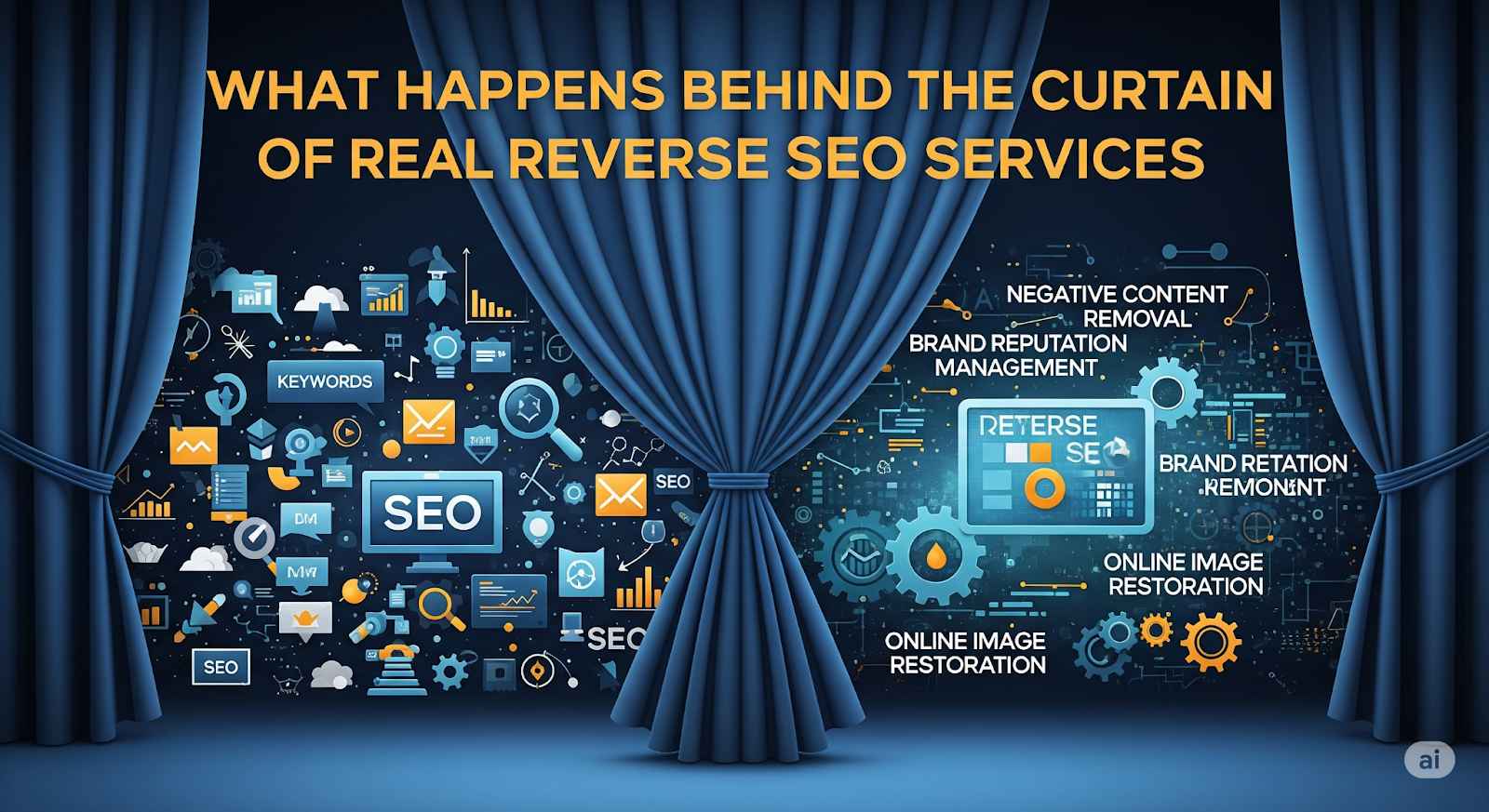Your reputation lives or dies on page one of Google. A single negative article, blog post, or review can erode trust, damage relationships, and incur real costs. That’s why many individuals and businesses turn to reverse SEO services—a strategy that goes far beyond burying bad press.
But what does reverse SEO actually involve? And why is it often misunderstood?
What Is Reverse SEO—and Why It Matters
Reverse SEO is the practice of pushing down unwanted or harmful search results by outranking them with more favorable, authoritative content. It doesn’t “delete” anything, but it makes negative links harder to find.
Why it’s a critical service:
- Search results are your digital first impression
- 90% of users never click past page one of Google
- One negative link on page one can cost you leads, sales, or opportunities
For anyone with old blog posts, bad press, or misleading information dominating their search results, reverse SEO is a reputation lifeline.
What Reverse SEO Isn’t
Let’s clear up the misconceptions.
It’s not:
- Hacking or removing pages from someone else’s site
- Paying for fake reviews
- Stuffing Google with spam or low-quality links
Real reverse SEO services are rooted in ethical SEO, content marketing, and digital PR—focused on improving your online visibility, not gaming the system.
How Reverse SEO Services Actually Work
1. Strategic Content Creation
The first step is building high-quality, optimized content that pushes harmful links down in the rankings.
This includes:
- Blog posts and articles around targeted keywords
- Press releases and company announcements
- Case studies, testimonials, and interviews
- New landing pages optimized for branded search terms
The goal is to create better content that Google prefers to rank higher than the negative links.
2. Link Building (Ethical & Strategic)
Search engines weigh backlinks heavily. Reverse SEO pros focus on earning quality links to the positive content they create.
Tactics include:
- Guest posting on trusted blogs
- Digital PR outreach to news sites or niche publishers
- Securing links from business directories or industry pages
These links help raise the authority of positive pages, allowing them to outrank damaging content.
3. Profile Optimization
Existing profiles (like LinkedIn, Crunchbase, company bios, or professional directories) are updated and optimized to rank higher in search results. These are often under-leveraged assets that, with the right tweaks, can displace negative results.
4. SERP Real Estate Management
The goal isn’t just to push down one bad result—it’s to control as much of the first page as possible. This involves publishing and optimizing content across a wide range of platforms, including:
- YouTube
- Medium
- Quora
- Reddit (carefully and authentically)
- SlideShare or niche forums
This strategy increases your visibility while minimizing space for negative content.
Key Tools Used in Reverse SEO
Professionals rely on a stack of tools to monitor progress, identify weaknesses, and adjust strategy:
- Google Search Console – monitors search performance
- SEMrush / Ahrefs – track keyword rankings, backlinks, and SERP changes
- Moz – monitor site authority and link-building progress
- Content platforms like WordPress, HubSpot, or Webflow for publishing optimized content
- Social media scheduling tools (e.g., Buffer, Hootsuite) to drive traffic to positive content
These tools help ensure the content being promoted is seen, clicked, and ranked.
The Challenges of Reverse SEO
It Takes Time
Reverse SEO isn’t instant. It usually takes 3–6 months to see significant shifts in rankings. Google rewards consistency and credibility, not quick fixes.
It’s Resource-Heavy
Effective reverse SEO involves:
- Writers and editors
- SEO specialists
- Outreach or PR teams
- Analysts to track movement
This is why many people outsource the work to professionals or agencies with the right infrastructure.
It Requires Ethics
It can be tempting to go the black-hat route, but it almost always backfires. Ethical reverse SEO means no fake reviews, no click farms, no content scraping. It’s about earning trust with useful, truthful content that deserves to rank.
Final Thought: Suppression Isn’t Deception—It’s Strategy
If your search results are holding you back, you don’t need to settle for invisibility or damage control. Reverse SEO services give you a path to reclaim control—without breaking the rules or faking your image.
Behind the curtain, it’s not smoke and mirrors. It’s smart SEO, thoughtful content, ethical strategy, and relentless consistency.
And it works…





